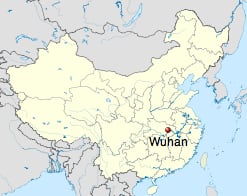The 25,000 square metre plant will produce Frito-Lay snack products such as Lay’s and Stax.
It is PepsiCo’s sixth plant in the market and its first food plant in the country that is LEED certified (Leadership in Energy and Environmental Design).
The plant has capacity to produce 15,000 tonnes of Lay’s potato chips annually and PepsiCo is expected to take on an additional 1,000 staff to run the facility.
Reaching remaining 60% of population
PepsiCo is looking to foster growth in the Chinese snacks market, which was worth RMB70.3bn in 2011, according to Euromonitor International.
The firm commands a 3.5% share of the Chinese sweet and savoury snacks market, making it the fifth biggest player, behind market leader the Want Want Group.
PepsiCo Chairman and CEO Indra Nooyi said: “The Wuhan plant is a crucial piece of our growth strategy, as it opens new opportunities for PepsiCo in central and western China”
“Nearly 40% of all Chinese have now tried Lay’s potato chips. It’s a testament to the unlimited growth potential here that 60% of the population—more than 800,000,000 people—have yet to experience them.”

Three lessons from China
In a blog post for PepsiCo, Nooyi said that the firm had learnt three core lessons since entering China three decades ago.
“First, for Chinese consumers it’s all about choice. They want variety,” she said.
She said that China had many more snack aisles than the US, creating “incredible growth opportunities” for manufacturers with diverse portfolios.
“Second, local tastes are key. Global brands do well here, if you can tailor products to local tastes,” she continued.
PepsiCo plans to open a new R&D centre in Shanghai by fall/autumn this year to drive innovation with local flavours.
“Third, how you do business in China is as important what you do,” concluded Nooyi.
She said the corporations were expected to build their companies in a way to help China grow, which included building sustainable plants and helping rural development.
The company estimates that the new China plant will use 30% less water and 20% less energy than PepsiCo China Foods’ 2006 baseline for manufacturing plants.
Brands and Packaging
Richard Lee, chief marketing officer for PepsiCo Greater China Region, added in another PepsiCo blog post that the company had customised its brands in other ways to appeal to Chinese consumers.
For example, the firm has changed the name of its brands to give local meaning. The Lay’s brand for instance is called ‘Le Shi’, which means Happy Things/Happy Moments.
“Consumer insights have led us to develop packaging well-suited for local snacking behaviour,” said Lee.
PepsiCo has, for example, redesigned its Lay’s Stax packaging for Chinese consumers, who tend to enjoy sharing their snacks. The product has a plastic tray inside the canister to allow sharing, which also reduces noise from the packaging and helps consumers keep clean fingers.
The new Chinese plant was opened by PepsiCo’s CEO this week.
